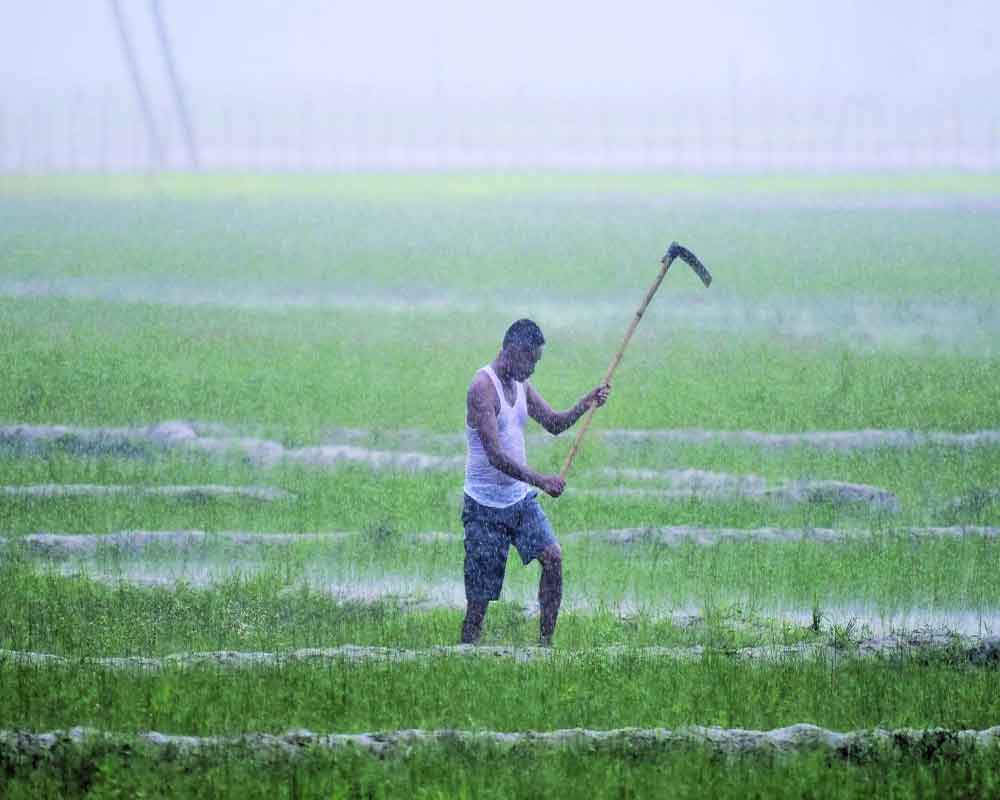Monsoon 2025: Floods, Dry Pockets and the Stakes for India’s Farmers
Header Banner Ad

Introduction
The 2025 southwest monsoon has been a study in contrasts: overall seasonal rainfall is close to normal so far, but regional extremes — ...
Inline Ad Unit
Introduction
The 2025 southwest monsoon has been a study in contrasts: overall seasonal rainfall is close to normal so far, but regional extremes — flash floods in the Himalayas and dry spells in parts of central and northeast India — are creating urgent challenges for rescue teams, farmers and policymakers. This article breaks down what the latest meteorological data and ground reports mean for agriculture, disasters and the economy.
Quick snapshot: What the data says
- The India Meteorological Department (IMD) reports that India’s seasonal cumulative rainfall (June 1–Aug 6, 2025) is about +3% of the long period average—near normal overall. 0
- However, large regional differences persist: parts of the northeast (eg. Meghalaya) and pockets of central India are rainfall-deficient, while some hill areas have seen extreme downpours. 1
- IMD and international agencies expect variable behaviour in August–September, with forecasts pointing to average to above-normal rains in many areas but below normal in isolated sub-regions. 2
Flash floods & mountain hazards: Uttarakhand in focus
On August 5–6, heavy cloudbursts and flash flooding in Uttarakhand’s Himalayan foothills caused deadly landslides and submerged villages, with rescue teams battling blocked roads and deep mud to reach missing people. The episode underlines how localized extreme rainfall in fragile mountain terrain produces outsized disaster impacts. 3
Dry pockets and local drought stress
Despite the national average being near normal, nearly 19% of India — including parts of northeast India and several districts in central India — is experiencing severe dryness or rainfall deficit. Local agricultural districts such as Malwa-Nimar in Madhya Pradesh have reported deficits exceeding 20% in recent weeks, stressing rabi reservoir recharge and sowing in some areas. 4
Agriculture & kharif sowing: mixed but generally resilient
Early monsoon rains helped accelerate kharif sowing: government and industry trackers show sowing area up versus last year, and ICRA/USDA reports indicate higher acreage for key summer crops. Still, the uneven spatial distribution of rain raises localized risk for yield loss (waterlogging in flood-hit zones; moisture stress in dry districts). Overall, analysts expect kharif sowing this season to meet or slightly exceed last year’s area under crops — a positive sign for food supply and rural incomes, provided rains distribute more evenly in August-September. 5
Economic & policy implications
- Food inflation & procurement: If rains broadly hold, food inflation pressure may ease; but localized crop losses (vegetables, pulses, oilseeds) can push up retail prices in short bursts.
- Irrigation & groundwater recharge: Below-normal rains in some regions highlight the need for faster irrigation investments and groundwater management to reduce monsoon vulnerability.
- Disaster spending: Flash floods in the Himalaya strain emergency response budgets and raise questions about long-term resilience in hill infrastructure.
What authorities and communities should focus on now
- Targeted relief & rescue: Rapid clearing of access roads and supply of food/medicine to affected Himalayan villages remains urgent.
- Localized ag support: Crop insurance (PMFBY) payouts, targeted seed and input assistance, and flexibility in loan moratoria for affected farmers will reduce distress.
- Climate-smart planning: Enforcing eco-sensitive construction norms in hill belts and expanding watershed projects will lower future risk.
- Better forecasting uptake: Strengthening village-level early warning systems and farmer advisories (micro forecasts) can improve preparedness for both extremes. 6
Conclusion
Monsoon 2025 shows why headline national rainfall numbers can be misleading: average conditions can mask dangerous regional extremes. Policymakers must walk a two-track path — respond urgently to floods and landslides in mountain belts while providing contingency support to farmers in drought-hit districts. The next six weeks (August–September) will be critical: a balanced second half of the monsoon can salvage crop prospects and calm price pressures, but volatility remains a real risk.